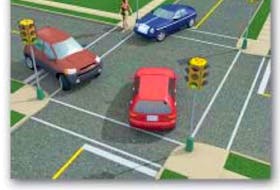CARBONEAR, N.L. — Lengthy ambulance response times in many towns of Conception Bay North and no ambulance at all stationed in Bay Roberts, one of the most thriving and populated communities in the region. These are some of the health-care issues that bedevil this area and the time for improvement is long overdue.
Municipal leaders in the 11 towns under the CB North Joint Councils from Cupids to Victoria say their communities have at least a 45-minute wait for an ambulance and if they are not waiting this long, they are still waiting too long, according to Joint Councils Chair Glenn Clarke.
“That’s been my personal experience and experience from people I’ve spoken with." Other mayors and councillors have expressed the same opinion. He amends slightly, “some of them are not saying 45 minutes, but some are saying response time (is) not very timely.”
However, an email from the Department of Health refutes Clarke’s claim. “The average response time in the towns from Cupids to Victoria is actually 13 minutes … nine minutes faster than the provincial average response time of 22 minutes”, it read.
Counting the number of ambulances responding to calls in the 11 communities is difficult. There are probably 12 and I say 'probably' because there are some discrepancies in emails sent by the Department of Health. Discrepancies which should not exist when that department is responsible for their licensing. But the number 12 has been used in its first and subsequent emails, so I’m comfortable with it. So there are 12 ambulances in Conception Bay North for a population the department estimates at 24,100, based on 2016 census figuree. It does not say how many are used for emergencies and how many are used for routine medical transport. A chart sent by the department showing average response times in areas of CBN pinpointed a high of 19 minutes to Upper Island Cove, to a low of eight minutes to Carbonear.
This must come as a surprise to Clarke who had to wait 45 minutes for an ambulance to come from Avondale to Victoria, about 63 kilometres away, when he experienced a medical crisis. The average response time in the chart shows 13 minutes to Victoria. There is also a qualifier at the bottom, saying “… The Provincial Ambulance Program does not vary the response time standard based on an individual’s medical condition.” This sounds ominous, especially when eight minutes, 59 seconds is the national response-time goal for paramedics in Canada for the most serious emergencies. The email does give some comfort by saying the province’s ambulance program is trying to find ways to improve on the length of time it takes to respond to a call.
The Joint Councils now feel ambulance response times have grown so lengthy it has asked Health Minister John Haggie to attend a meeting and explain why. Haggie has twice agreed to meet with them in his office at Confederation Building, but they prefer he or his representative attend one of their meetings and address the issue in “an open discussion” with all members. Haggie, apparently unable to meet outside St. John’s,
offered to send a representative, Michelle Breen, director of paramedicine and medical transport with Eastern Health. Despite several attempts by a Joint Councils employee to reach the St. John’s-based Breen between early and mid-November or slightly beyond, there was no response until Dec. 4 when Breen told her that discussions would take place later. Such a time lag could be interpreted as indifference. Haggie, according to the department email, will meet with Joint Councils when a date and time can be arranged. The email did not say where the meeting would take place.
Clarke is also disturbed by a policy that he says has been implemented at Carbonear General Hospital where a paramedic must stay with a patient brought there by ambulance until that patient is seen by a doctor. He says, “that seems to be tying up ambulances for maybe too long. Whether it’s unnecessary or not, we don’t know, but we need to know.” Both Eastern Health and the Department of Health responded saying there is no policy as such but a paramedic has a “… professional responsibility” to wait with a patient until they are “…transferred to a health-care provider that is of equal or higher training such as a “…registered nurse.” The transfer depends on the availability of those nurses. This, coupled with other operational procedures required of paramedics, could keep emergency ambulances at the hospital longer than most of us would like
Bay Roberts, meanwhile, has spent years clamoring for an ambulance, but its cries have fallen on deaf ears. Its mayor, Philip Wood, says the town has a population of over 6,000, a high traffic volume, a student population of more than 1,500, more accidents than it would like around its commercial centre, and recreational facilities where mishaps requiring an ambulance are more likely to happen.
Several months ago there were two incidents where it took slightly over 20 minutes for an ambulance to respond. In one case a dispatcher was found negligent and was given additional training. The other was caused by a high call volume for ambulance service. Those closest to the scene could not assist so an ambulance responded from Harbour Grace, roughly a 20-minute drive away. The delay was caused by the travel time of that ambulance. One incident involved a person suffering a heart attack who was taken to the hospital by family or friends.
There have been many complaints about overly-long ambulance wait times and Wood and his council want the problem rectified by having one stationed there. “If a very essential service concern is being brought to your attention, it’s certainly up to you to address it to the best of your ability, ” he said.
Fewer’s Ambulance Group, based in Clarenville but with ambulances posted throughout this region, has applied to the Department of Health to station an ambulance or ambulances in Bay Roberts, according to a statement from the department. At time of writing last week, Wood was waiting and hoping. He was not alone. Pam Parsons who represents his town in the provincial legislature was doing the same. The consummate advocate has been lobbying for ambulance service in Bay Roberts since her election in 2015. “I’m optimistic,” she says, “I’m anticipating, hoping for some good news any time now.”
Statistics released by the Department of Health puts the total number of calls for an ambulance in Conception Bay North between 6,500 and 7,000 for the past five years. And that’s a lot to those who made them as well as their loved ones. As a physician, John Haggie well knows ambulance response time can mean the difference between life and death. It is now up to him and his people to determine which they will choose.
Pat Cullen is a journalist who lives in Carbonear. She can be reached at 596-1505 or [email protected].









